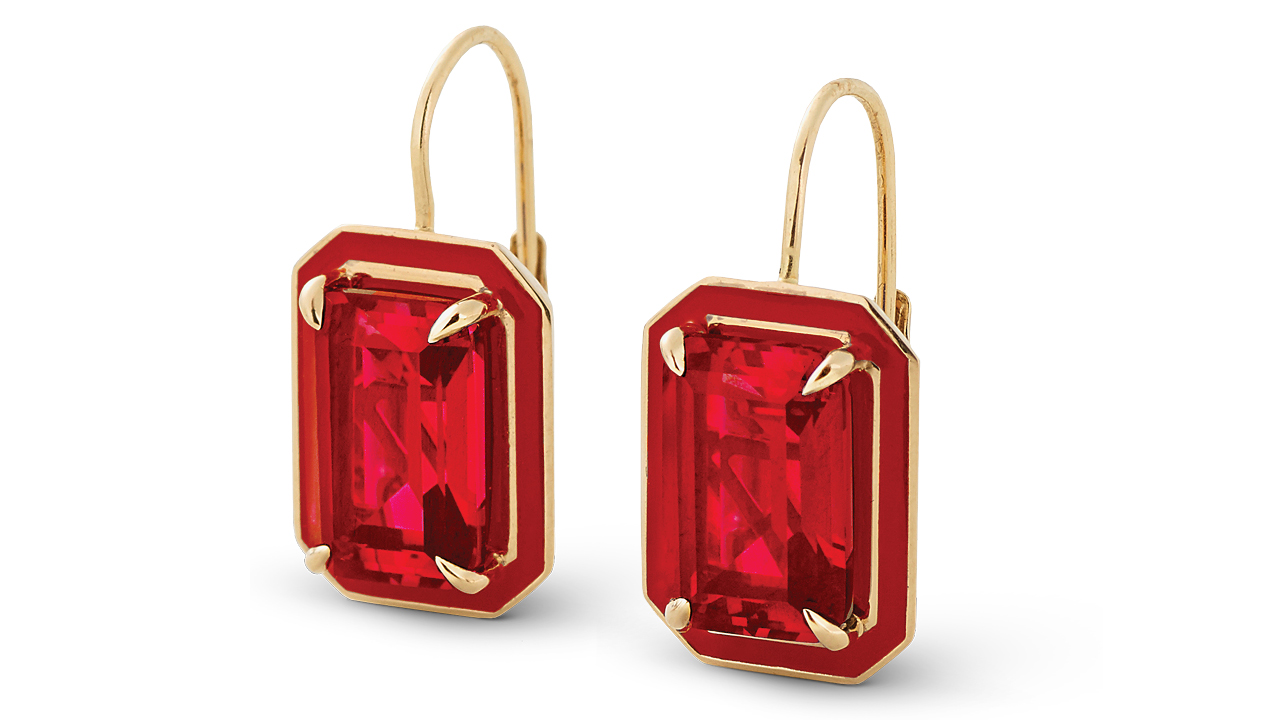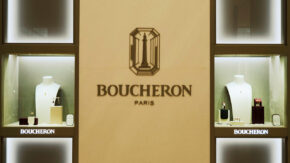While synthetic gems, particularly rubies, have been around since the mid-1800s, they haven’t caused as much disruption to the natural-ruby or broader gemstone industry as lab-grown diamonds have to that of their natural counterparts. Some attribute this difference to the larger scale of the natural-diamond sector. Others cite the overall rarity factor of colored gems — and of rubies in particular, especially in the ancient world — as granting these red stones a cultural prestige that has continued to drive the price upward and increase the gap between natural and synthetic specimens.
Beyond that, the portability of precious gems, combined with their inherent value and beauty, has ensured their rise in demand through the ages, especially during periods of chaos and conflict.
The ruby precedent
Throughout history, jewels have contained imitations such as colored glass, sometimes with shaded metallic sheets as a backing. Lab-grown gems, which have the same chemical makeup as natural ones, took things to a new level.
Ruby was the first gemstone to be synthesized. “Irrespective of the period, rubies have always been a high-demand, low-supply item,” explains Anil Gandhi, director of Gazdar Jewellers. “And when desirability for a product outstrips its supply, pushing prices into stratospheric levels, the market seeks replacements.”
Experiments to synthesize gems began as early as the mid-19th century, according to author Joel Arem in his book Gems and Jewelry. The earliest was Marc Gaudin in France, although he never managed to create gem-quality corundum. In the mid-1880s, a product called “Geneva rubies” surfaced, initially believed to be natural but later turning out to be man-made. Not long afterward, Edmund Fremy of Paris developed a commercial process for creating ruby. However, his rubies emerged as thin plates. He mass-produced them at a low cost and widely sold them for watch and instrument bearings. At the end of the 19th century, Fremy’s assistant Auguste Verneuil pioneered a novel technique for synthesizing ruby, leading to the first gem-quality specimens. Since its introduction to the public in 1904, the fundamental design of the Verneuil furnace has remained mostly the same.
As with lab-grown diamonds, most synthetic gems are factory-produced in China today, particularly calibrated small sizes. High-quality goods — those with excellent cut, luster and polish — are available in Bangkok, Thailand, with commercial-grade gems getting cut in India. Other centers include France, Germany and Switzerland.
Mind the gap
Going by the ruby industry’s experience, the future looks promising for natural diamonds, according to Sean Gilbertson, CEO of colored-stone miner Gemfields.
“As is often the case, people forget their history,” he says. “This whole situation with lab-grown diamonds is a movie we’ve seen before with synthetic rubies, and hence we know how it will end. Soon after Verneuil’s invention more than a century ago, the production of lab-grown rubies went through the roof. When people started losing money to the oldest scam in the book — being sold lab-grown rubies under the pretense that they were natural — the labs developed tools to detect the lab-grown versions, giving the buyer protection. This caused the market to bifurcate. Natural-ruby prices remained a little bit dented for a while, recovering later, but lab-grown ruby prices decayed monumentally. We are already seeing history repeat itself with the pricing gap between natural and lab-grown diamonds.”
The dramatic split between synthetic and natural rubies took an estimated 20 years to occur as verification methods caught up, say industry experts. A similar progression happened with other gems: Today, if a top-grade natural 10-carat Colombian emerald with minor clarity enhancement costs $200,000, a lab-grown version would cost $400 to $500 in total.
Pearls are a different story. It took the natural-pearl industry some 60 years to recover from the advent of cultured specimens. “There was a time in the history of natural pearls when the price of a cultured pearl was higher than a natural, because people could not tell the difference,” says gem and pearl specialist Ronny Totah of jeweler Horovitz & Totah. “It took time for technology to catch up. Also, the natural-pearl industry was not organized, so people just abandoned the business and moved on. The situation with diamonds is different, because you have tools to distinguish between a synthetic and a natural diamond, and most of the industry is institutional.”
Just the currency value
In the synthetic realm, emeralds have higher prices than rubies and sapphires, as they are more difficult to create. The first faceted synthetic emeralds made their public debut in 1963, decades after Verneuil’s invention.
“A vivid-green synthetic emerald would be priced [starting at] around $20 per carat,” says Kanish Sogani, managing director of supplier SRK Gems. “In comparison, lab-grown rubies [and] blue and pink sapphires would be around $5 per carat, yellow sapphire approximately $4 per carat, synthetic alexandrite $2.50 per carat, and all other lab-grown gems in shades of red, purple, green and orange would be around $1 per carat.”
Natural-gem prices have risen five- to tenfold post-pandemic because of disrupted supply lines, further widening the gap between them and synthetics.
“We deal in primarily natural gems, but if we get an order, our firm will arrange synthetic gems with a certificate,” says Sogani. “Unlike natural gems, where the value starts with color first, in synthetic stones, the game is all about the cutting, polishing and luster. Color in a synthetic is the easy part. And if we compare prices of synthetic gems now to what they were two decades ago, it hasn’t changed. The only advantage of keeping a synthetic in stock over time would be the currency value [that you originally paid] — that’s it.”
Diamond Deceptions
Lab-grown diamonds present two major challenges, according to Gemfields’ Sean Gilbertson: misinformation in consumer marketing of the product, and unscrupulous individuals mixing lab-grown in with parcels of natural melee to cheat people out of their money. “It’s a fraud as old as time,” he says, “but eventually technology will catch up, aiding verification.”
One of the lab-grown industry’s arguments is that natural-diamond mining is less ethical. However, Ronny Totah of Horovitz & Totah believes “there is a veneer of morality that has been applied on this commercial scam — aka lab-grown diamonds — whereas the reality is that it’s all about making money at the expense of the consumer. When this story started, lab-grown diamonds were 30% cheaper than natural diamonds. Recently, I received yet another email asking me if I am interested in buying a synthetic diamond at a 99.12% discount. So anyone who bought these man-made diamonds at a 70% discount lost money.”
Image: Alison Lou Cocktail earrings featuring rectangular-shaped lab-created rubies and enamel in 14 karat yellow gold. (Alison Lou)
This article is from the May-June 2024 issue of Rapaport Magazine. View other articles here.
Stay up to date by signing up for our diamond and jewelry industry news and analysis.



